Old-school hip hop is the earliest commercially recorded hip hop music and the original style of the genre. It typically refers to the music created around 1979 to 1983, as well as any hip hop that does not adhere to contemporary styles.
The new school of hip hop was a movement in hip hop music, beginning in 1983–84 with the early records of Run–D.M.C., Whodini, and LL Cool J. Predominantly from Queens and Brooklyn, it was characterized by drum machine-led minimalism, often tinged with elements of rock; rapped taunts, boasts, and socio-political commentary; and aggressive, self-assertive delivery. In song and image, its artists projected a tough, cool, street b-boy attitude. These elements contrasted sharply with funk and disco, novelty hits, live bands, synthesizers, and party rhymes of artists prevalent in the early 1980s. Compared to their older hip hop counterparts, new school artists crafted more cohesive LPs and shorter songs more amenable to airplay. By 1986, their releases began to establish hip hop in the mainstream.
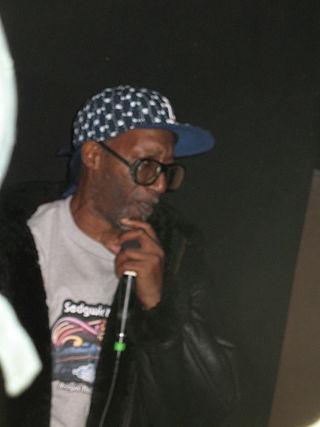
Coke La Rock is an American rapper from New York City who is sometimes credited as being the first MC in the history of hip-hop.

Henry Lee Jackson, known by his stage name Big Bank Hank, was an American hip hop recording artist and manager. Also known as Imp the Dimp, he was a member of the trio The Sugarhill Gang, the first hip hop act to have a hit, with the cross-over single "Rapper's Delight" in the pop charts in 1979. He contributed to many documentaries based on the rap music industry. Lyrics to his verse from "Rapper's Delight" were allegedly plagiarized from rhymes written by Grandmaster Caz.
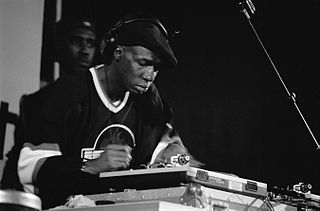
Hip hop or hip-hop is a culture and art movement that was created by African Americans, starting in the Bronx, New York City. Pioneered from Black American street culture, that had been around for years prior to its more mainstream discovery, it later reached other groups such as Latino Americans and Caribbean Americans. Hip-hop culture has historically been shaped and dominated by African American men, though female hip hop artists have contributed to the art form and culture as well. Hip hop culture is characterized by the key elements of rapping, DJing and turntablism, and breakdancing; other elements include graffiti, beatboxing, street entrepreneurship, hip hop language, and hip hop fashion. From hip hop culture emerged a new genre of popular music, hip hop music.
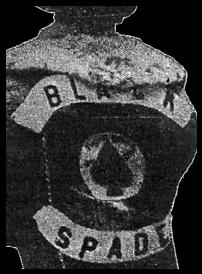
The Black Spades were a mostly African-American street gang which started in the Bronx during the late 1960s and gained popularity in the 1970s. The gang began to spread from the Bronx to Manhattan, Queens, Brooklyn, Staten Island, New Rochelle, New Jersey, Massachusetts and Connecticut by the late 1980s. During this period Latino and white members were more common. The Black Spades have made a comeback in 2019 with more members joining. They are now TBS New Direction, a community service group championing anti-violence initiatives and providing food distribution for the food insecure.
A house concert or home concert is a musical concert or performance art that is presented in someone's home or apartment, or a nearby small private space such as a barn, apartment rec room, lawn, or backyard.
Sandro Orrù, known as DJ Gruff, Gruffetti or Lowdy N.C.N., is a pioneer of the Italian hip hop scene. Known for his original take on rapping and scratching techniques since 1982. He has been active as a turntablist, DJ, beatmaker, rapper and producer.
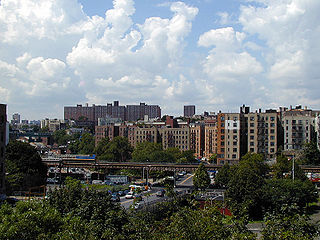
Morris Heights is a residential neighborhood located in the West Bronx. Its boundaries, starting from the north and moving clockwise are: West Burnside Avenue to the north, Jerome Avenue to the east, the Cross-Bronx Expressway to the south, and the Harlem River to the west. University Avenue is the primary thoroughfare through Morris Heights.
University Woods, also known as Cedar Park, is a small woodland park in the University Heights neighborhood of the Bronx in New York City. Overlooking the Harlem River, the park sits between Sedgwick and Cedar Avenues. After having been named "the city's worst park" by the New Yorkers for Parks in the years 2003–2006, a restoration project was begun in 2008 by the Friends of the Woods organization, with a $500,000 grant from Mayor Michael Bloomberg.

Super Bad is the second solo album by DJ Terminator X. The album was released on June 21, 1994, on Def Jam Recordings sub-label RAL and was produced by Terminator X, Kool DJ Herc, Grandmaster Flash, and Russell Simmons. The album was only a minor success, making it to #189 on the Billboard 200 and #38 on the Top R&B/Hip-Hop Albums. Two singles were released, "Under the Sun" and "It All Comes Down to the Money," the latter of which made it to #26 on the Hot Rap Singles. "It All Comes Down to the Money" was released in 1993.

Clive Campbell, better known by his stage name DJ Kool Herc, is a Jamaican American DJ who is credited with being one of the founders of hip hop music in the Bronx, New York City, in 1973. Nicknamed the Father of Hip-Hop, Campbell began playing hard funk records of the sort typified by James Brown.
Hip-hop or hip hop music, also known as rap, and formerly as disco rap, is a genre of popular music that originated in the early 1970s by African Americans and Afro-Caribbean immigrants in the Bronx, a borough of New York City. Hip-hop music originated as an anti-drug and anti-violence genre consisting of stylized rhythmic music that often accompanies rapping, a rhythmic delivery of poetic speech. In the early 1990s, a professor of African American studies at Temple University said, "hip hop is something that blacks can unequivocally claim as their own." By the 21st century, the field of rappers had diversified by both race and gender. The music developed as part of the broader hip hop culture, a subculture defined by four key stylistic elements: MCing/rapping, DJing/scratching with turntables, breakdancing, and graffiti art. While often used to refer solely to rapping and rap music, "hip hop" more properly denotes the practice of the entire subculture. The term hip hop music is sometimes used synonymously with the term rap music, though rapping is not a required component of hip hop music; the genre may also incorporate other elements of the culture, including DJing, turntablism, scratching, beatboxing, and instrumental tracks.

Sedgwick Avenue is a major street in the Bronx, New York City. It runs roughly parallel to Jerome Avenue, the Major Deegan Expressway, and University Avenue. Sedgwick Avenue is one of the longest streets in the western part of the Bronx, running from Mosholu Parkway at the north to Macombs Dam Bridge at its southern end, about 800 feet west of Yankee Stadium.

Joseph Robert Saddler, popularly known by his stage name Grandmaster Flash, is a Barbadian-American DJ, rapper and producer. He created a DJ technique called the Quick Mix Theory. This technique serviced the break-dancer and the rapper by elongating the drum breaks through the use of duplicate copies of vinyl. This technique gave birth to cutting and scratching. It also gave rappers better music with a seamless elongated bed of beats to speak on. He also invented the slipmat.
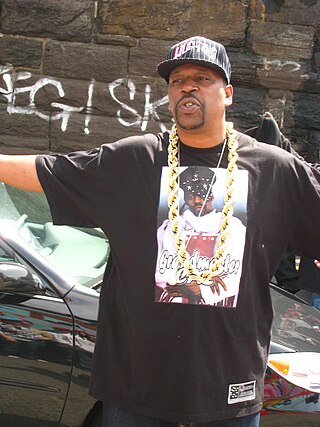
Curtis Brown, better known by the stage name Grandmaster Caz or Casanova Fly, is an American rapper, songwriter, and DJ. He was a member of the hip hop group The Cold Crush Brothers from 1979 to the mid-1980s. He is best known as the (uncredited) main writer of Big Bank Hank's raps on the seminal 1979 hip hop single by The Sugarhill Gang, "Rapper's Delight".

Hip Hop Family Tree is a series of educational and historical comic books by Ed Piskor that documents the early history of hip hop culture. Originating online with Boing Boing, the series was published in print form by Fantagraphics. The first collection was a 2014 New York Times Graphic Books Best Seller (#7) and was listed in The Washington Post Top 10 graphic novels of 2013. The second collection won the Eisner Award for Best Reality-Based Work in 2015.
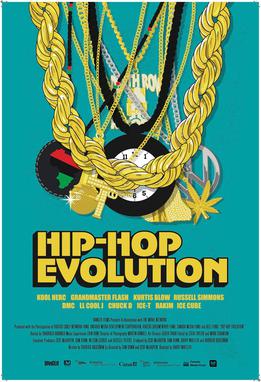
Hip-Hop Evolution is a Canadian music documentary television series that originally aired on HBO Canada in 2016. Hosted by Juno Award-winning artist Shad, the series profiles the history of hip-hop music through interviews with many of the genre's leading cultural figures. The series is produced by Darby Wheeler, Rodrigo Bascuñán, Russell Peters, Scot McFadyen, Sam Dunn and Nelson George. It won the 2016 Peabody Award, and the 2017 International Emmy Award for Best Arts Programming.

The South Bronx is an area of the New York City borough of the Bronx. The area comprises neighborhoods in the southern part of the Bronx, such as Concourse, Mott Haven, Melrose, and Port Morris.
The Hip Hop Museum is a museum dedicated to the celebration and preservation of Hip hop music, dance, art and culture and "permanent place to celebrate the music that has made the Bronx famous around the world". The museum will be located on Exterior Street in the Lower Concourse neighborhood of The Bronx when construction is complete.














